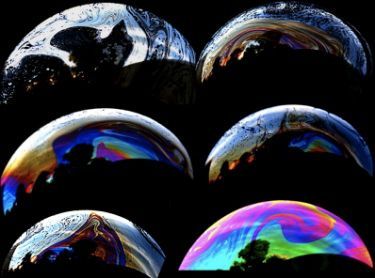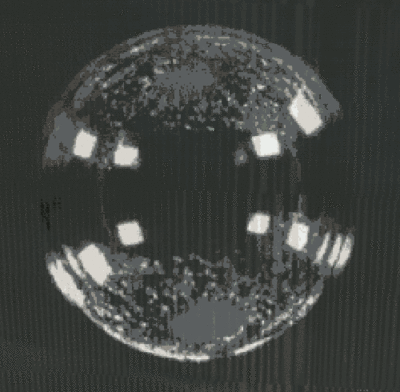The happy and blissful memories of blowing the bubbles and chasing them with our friends never fades out from our mind. How many of you have been enthralled with these bubbles wafting in the air? These magical orbs fascinate kids and grown-ups alike. The ability of the bubbles to soar through the sky, the beautiful rainbow colours exhibited by them and its fragile nature seems mysterious to all of us. Apart from capturing the essence of childlike wonder, bubbles demonstrate a plethora of valuable scientific principles.
Blowing the bubble is one of the simplest pleasures of life. But, the science that moulds them can be quite complex. This article will help you unravel the science behind the beautiful spherical bubbles.
The spherical globes
Bubbles are a very thin film of soap. A mere touch of the finger can break the delicate bubbles. The film of a bubble is made up of three layers. A thin layer of water is sandwiched between two layers of soap molecules. All the three layers work together to hold the air inside the bubble. The soap molecule is oriented in such a way that it’s hydrophilic or polar side faces the water. And, the hydrophobic tail is faced away from the water layer. The hydrophobic end of the soap, as the name suggests is fearful of water and runs towards any dirt such as grease and holds onto it for its dear life.
The magnificent colour
The splendid colours that you see in a bubble are no supernatural thing but pure science.  The colour of the bubble is attributed to the light waves reflecting between the outer and inner surface of the soap film.
The colour of the bubble is attributed to the light waves reflecting between the outer and inner surface of the soap film.
White light is made up of diverse colours of a specific wavelength. The light is striking the bubbles at different angles. When a light wave hits the surface of a bubble, a fraction of the light is reflected back to a viewer's eye from the outer surface and part of the light is reflected from the inner surface which is a few millionths of an inch further.
As the two waves of light travel back, they interfere with one another causing colour. When the waves reinforce each other, the colour is more intense. When the waves get close to cancelling each other out, the colour almost vanishes away. As the film gets thinner and thinner, the distance between the outer and inner surface decreases. Eventually, the two reflected waves of light will coincide and cancel out each other. Hence, the bubble loses its colour and becomes nearly invisible.
Shape of bubbles
![]() Bubbles are spherical in shape because of an attractive force called surface tension, that tend to pull the molecules of water into the closest possible groupings. Of all the possible symmetries that we know like cubes, pyramids, rectangle, square, the smallest area is that of the sphere. And the molecules tend to group themselves together to form a surface with the minimum surface area because of the property of surface tension. Hence, the spherical shape of the bubbles.
Bubbles are spherical in shape because of an attractive force called surface tension, that tend to pull the molecules of water into the closest possible groupings. Of all the possible symmetries that we know like cubes, pyramids, rectangle, square, the smallest area is that of the sphere. And the molecules tend to group themselves together to form a surface with the minimum surface area because of the property of surface tension. Hence, the spherical shape of the bubbles.
Popping of bubbles
The moment of happiness is suddenly broken by the catastrophe that occurred. Yes! The bubbles popped when you were trying to make it as big as possible or when you were on a mission of  chasing and catching them. What do you think might have happened? Why did the bubble pop? The answer is quite simple. The layer of water molecule which is trapped between the layers of soap in a bubble evaporates because of dry or warm air in the surroundings. The dry air soaks up the water inside the bubble and the film will gradually become thinner and thinner, finally popping.
chasing and catching them. What do you think might have happened? Why did the bubble pop? The answer is quite simple. The layer of water molecule which is trapped between the layers of soap in a bubble evaporates because of dry or warm air in the surroundings. The dry air soaks up the water inside the bubble and the film will gradually become thinner and thinner, finally popping.
Anything sharp or dry can burst the tenuous layer of water molecules. A gust of the wind or your dry finger will cause the bubble to burst easily. But if you will wet your fingers in the soap solution with which you created the bubbles, they won’t pop. Amazing it is! This is because your wet fingers will give the water molecules in the bubble to hold onto and hence they will remain intact.
So, if you want to catch a bubble in your hand, first cover it with a thin layer of the bubble solution you’re using. The additional liquid will prevent the bubble from drying out and bursting. And, enjoy the time of your life, spreading happiness around and within you.

Magnificent difficulties completely, you may received a new audience. What could a person recommend relating to your post that you just created . Opticals Asansolat times back? Every certain?